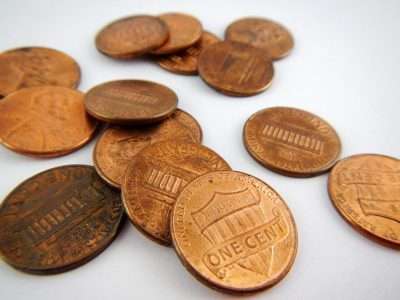On an art teacher’s Facebook forum, a teacher recently asked, “How much of your own money do you spend on supplies for your art classes? I don’t see how I can’t spend some of my own.” Within the ranks of art educators, you can find many different modes of thought on this topic. Answers to this teacher’s question ranged from “Nothing” to “More than one thousand dollars.”
The U.S. Department of Education reports that 94 percent of teachers reach into their own pockets to purchase classroom necessities. The Association of American Educators (AAE) reports, according to a recent survey of more than 1,100 educators, that teachers spend, on average, $673 per year on supplies for the classroom. While there were no studies I could find specific to art teachers, the reality is that art is a subject that is highly dependent on materials while being notoriously underfunded. In addition, inflation is driving up supply costs, and teaching salaries are stagnating. In the answers to the FB group question, teachers reported spending anywhere from nothing to over 1000 dollars on art supplies for their art classrooms.
The Argument for Limited Spending
Unfortunately, public education isn’t adequately funded; we art teachers feel that acutely. While there are no quick fixes for the underfunding of schools, I have some advice. First, as long as you can afford the necessities of life for yourself and your family, it’s not “wrong” to spend some money on classroom supplies in moderation. I always found that despite being careful with how I spend my budget, there were some things I couldn’t buy from catalogs. For example, I teach Ceramics, and when we would run low on plastic bags, I would toss an extra zip-lock gallon-size plastic bag in my cart while grocery shopping. During back-to-school time, you could often buy scissors for 25 cents in the sales at office stores. How could I say no to that steal? And I was forever looking at bargain outlets for fake fruit for still life. I was a connoisseur when it came to fake fruit. Occasionally throwing money at a problem- like buying glue sticks when you run out and there is a month left of school- seems better than stressing out and figuring out how to do without.
The Arguments Against Reaching into Your Own Pocket
It’s also not “wrong” to refuse to spend money either. After all, your job is supposed to pay you! A doctor doesn’t spend money on gauze and bandaids for his patients, so why should teachers? Are we enabling schools to underfund education if we do it? We could be called enablers, I fear. Besides that, at a certain point, spending money on classroom supplies will impact your financial goals. Maybe your children’s college funds are lagging, you couldn’t take a vacation, or you are not saving enough for retirement or other long-term goals.
I will note it’s really important that a department looks at this as a big-picture scenario. There is nothing worse than seeing one art teacher whose students have so much more than another teacher; it creates inequity where there should be none.
When Your School Chronically Underfunds the Arts
If your school does not fund art- and you may be surprised to know there are art teachers with absolutely no budget- you should seek another job. Let me repeat: if your school does not fund or chronically underfunds the arts, you can and should look for a new job, and it’s not wrong to let them know in your resignation letter that underfunding was an important factor in your decision.
How to Reign in Your Classroom Purchases
It’s my opinion when you are annually spending 500+ on supplies, you have a problem you need to solve. Remember that great art isn’t always the outcome of higher spending. You can look at your lessons and curriculum with your budget in mind. I have a portrait college lesson that I used to do that costs very little. I used old magazines the library saved for me. Be resourceful with cardboard. And there is so much to do with just paper and pencils! Check out all of these lessons here on My Art Lesson that can help stretch your budget while providing great art learning at the same time.






Classroom management and organization can also factor into matters. Are scissors disappearing because they are constantly being “borrowed?” Do you find metal rulers bent in half after a certain wild class? While we can’t prevent all these things, working on processes and procedures that help minimize loss and destructive behaviors is part of the big picture we must consider. Classroom management is part of the job. Do not hesitate to tier your supplies. For example, prang watercolor sets and markers for color theory with beginner classes, while advanced classes get quality acrylic paints and brushes.
Also, remember that the squeaky wheel gets the oil. Remember to ask for more and show your admins last year’s supply costs and this year’s cost for the same supplies. Don’t wait until budgets are due to start lobbying for an increase. Tap other resources as well. Can your PTO help? Can you charge a materials fee? Like elementary teachers, can you ask students to buy some basics? One art teacher I know asked her students to each bring in a dozen pencils yearly to stock her desk. I always asked students to buy a Sharpie and keep it in their backpacks and sometimes a sketchbook. I always kept a few sketchbooks around for kids who hadn’t bought a sketchbook after everything was said and done. I never made a fuss about it. But knowing I only had to buy a few sketchbooks and Sharpies made a difference.
Also, look for material exchange programs, Freecycle, and Facebook free groups in your area. Yard sales, a favorite hobby of mine, are another great source of inexpensive finds for things like still-life items. One year, I spotted several amazing wooden flat files for cheap on Facebook Marketplace and convinced my school to purchase them. Amazon wish lists are another way art teachers supplement their school budget. Some schools have fundraisers for the arts and even boosters for the arts. Always check with your schools, but you can solicit donations. At one school, I had a local frame shop that would call me a couple of times a year to offer me their scrap matboard. It wasn’t always little strips, but often the centers from really big mats they cut. Printers will often donate end rolls of paper. Donors Choose, GoFundMe, Adopt A Classroom, Art to Remember, and Artsonia are other ways to raise money.
My Compromise
Over the years, I settled on capping my expenditures at 200 dollars—large enough to matter but small enough not to feel like I was stealing money from my family. You might want to take a picture of what you buy and the receipt to track your spending; it might be more than you think. Don’t forget that eligible educators can deduct up to $300 of out-of-pocket classroom expenses when you file your federal income tax return. Also, be aware that most catalogs (Blick Art, Nasco, etc.) typically provide discounts to schools; be sure to ask. When you do have to buy a product for the classroom, be sure to ask if the store provides discounts to teachers.
How much do you spend on classroom supplies? Do you have any tips for saving money? Effective fundraisers? What are your favorite inexpensive lessons? Share in the comments.
You might want to check out My Art Lesson’s article, Art Teaching On the Cheap.
Books to check out: Astonishing Art with Recycled Rubbish, Washed Ashore: Making Art from Ocean Plastic, Folded Book Art Made Easy: recycling books into beautiful folded sculptures, Art Education for a Sustainable Planet: Embracing Ecopedagogy in K–12 Classrooms




